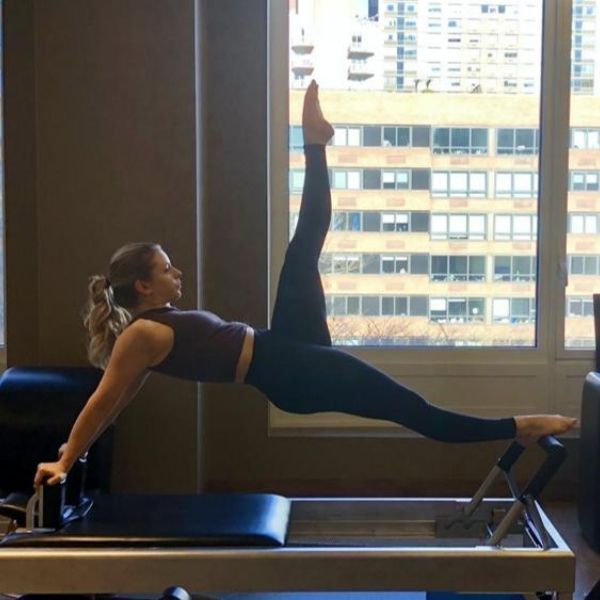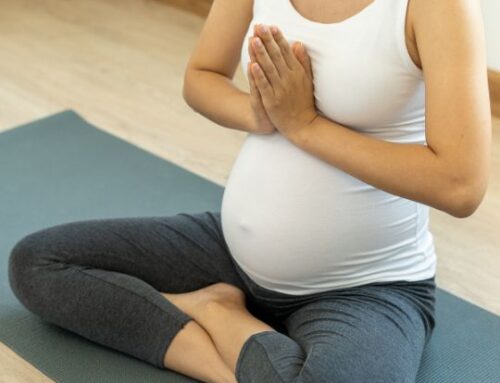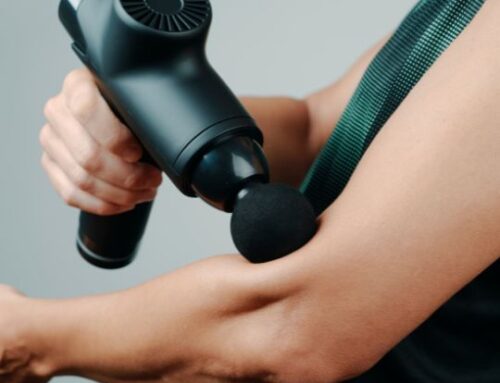About six years ago, back when I was working for Princess Cruise Lines. I was dancing on a ship called the Emerald Princess. The Emerald sailed all throughout the Mediterranean and was easily my favorite contract to work on as a dancer. I saw the ruins of ancient Rome in Italy, Blarney Castle in Ireland. I even got to do some archery in Estonia. Some of the best experiences of my life were on that ship. But it wasn’t all smooth sailing (Ha, ha! Nautical puns!).
One night, while we were performing a show called “Boogie Shoes,” during a section choreographed to the song “Vogue” by Madonna my partner and I came together to perform a lift. On this particular night, my partner’s jump and my upward lift were not totally in sync. As a result I needed to add extra muscle to ensure that the lift was successful. Though the lift went well and we finished the show, the next morning I could feel that my entire mid back had gone into spasm. Why did this happen? Because I failed to utilize proper biomechanics. By using only my muscles to lift rather than creating a stable base with proper anatomical alignment, my muscles were forced to work overtime and as a result, I strained my back. An outcome that was entirely predictable given my wrongful approach to lifting.
Welcome to the Dancer Blog! Last week we discussed the proper biomechanics of how a dancer lifts. This week we’ll be discussing common injuries that occur when partnering and how you can tell a dancer’s weaknesses based on the injuries they sustain when partnering. We’re going to be looking at this from the male dancer’s perspective. Sorry ladies, we’ll discuss what happens to the woman’s body as they are lifted in a future blog but for now I’m focusing on the man’s perspective.
Last week we discussed how lifting in dance has more similarities with power lifting than it does your standard weight training. Proper biomechanics for dancers means less muscling a lift and more utilization of physics as well as establishing a base on which the lift can rest. This is accomplished through alignment of the joints and bones with the muscles playing a supporting role by providing stability. Now that we understand this principle, detecting the cause of an injury is just a matter of understanding the delicate balance that exists between the structural components (joints and bones) and the support components (muscles) as well as how a lack of either can cause specific, although different, kinds of injuries.
Let’s discuss how a weakness in structure can lead to injury first. Similar to the balance between Flexibility and Strength, structure and stability play equal roles in any lift. If there is a deficiency in the structural component, for example the arms are not fully extended or the back is not aligned properly, then the muscles have to play a bigger role in the lift. Instead of providing support to the structural base, the muscles must now aid in creating and maintaining that base. This means that the muscles are doubly taxed, making it hard for them to fulfill either role. This leads to an increased risk of injury. Specifically, muscular strains, tears and ruptures. Generally, for men, this means rotator cuff and back injuries. Disc herniations are also possible when the muscles play the primary role in a lift. This harkens back to the fact that the spine is a major player in all lifts in dance.
The key to injury prevention here is simple repetition. Spending time in the studio with your partner practicing the lift is the best way to establish the motor memory needed to regularly and reliably perform a lift. If a lift doesn’t sync well in the studio, you can stop and try again without the need to muscle it. All bets are off once performance time comes however, and this is where these kinds of injuries are more likely to occur. On stage, you don’t want a lift to fail and so a performer is more likely to muscle a lift when it goes wrong. This is of course why rehearsals are so important.
I also want to mention here that we should NEVER over-rehearse a lift. This is true whether we are successful or unsuccessful in execution. When practicing a lift with your partner, if things are not going well after a few attempts, leave it alone and come back to it later. Similarly if rehearsing the same section of a production over and over again, it’s not a good idea to run a lift over and over as well. This is because of muscular fatigue. Running a lift over and over will inevitably fatigue the muscles. This can cause damage to the muscles in the form of an overuse injury as well as cause injuries to the joints or bones. Which is a perfect segway into my next point!
How can a weakness in our support system cause injuries when lifting? Just as a lack of structure causes the muscles to work overtime when lifting, a lack of support will cause the joints and bones to take on extra stress. Last week I talked about how joints have built in shock absorbers that help them bare the forces of a lift. Without a muscular support system to share that force these shock absorbers can be overtaxed and injured. Specifically we’re talking about joint sprains/derangement and tendon tears/ruptures. Less commonly, though not unheard of, are broken bones. Now bones are built to withstand large amounts of force, especially through their long axis. This doesn’t mean that the limit cant be exceeded. I’ve seen first hand dancers experience stress fractures and worse following a lift gone wrong.
The key to injury prevention here is muscle training. Now I don’t mean going into the gym and bulking up until you can bench press 1,000 lbs. That’s strength training, and while this too is important, it’s not our focus here. I’m talking about endurance training and core strengthening. Endurance training is less about how much you’re lifting and more about how many times you lift it. Low weight with high reps taxes your muscles over time rather than all at once. This simulates what the muscles go through during a production. Increasing a muscles endurance allows them to play the supporting role over a prolonged period of time. This is essential as the vast majority of dance lifts see the man lifting the women over some amount of time. Few lifts are single explosive events.
Now core strengthening could be an entire blog post on its own and lucky for us, Dr. Mike wrote one here! Make sure to watch his video demonstration. It perfectly demonstrates how strong we are when proper alignment and strength are balanced as well as how weak we become when the two are unbalanced. Make sure to check it out!
Speaking of core training and proper alignment, you know what’s really good for building both? Pilates! And that brings us to this week’s shout out: Angela Siler Blitstein. Angela currently works as a Pilates instructor in New York City. Her and I go way back to undergrad together at the University at Buffalo’s Dance Department. Not only has Angela performed internationally but she is also trained in stunt work and has worked professionally on productions as a lighting designer. Recently, Angela began creating YouTube videos under the moniker The Fit Curls, where she posts product reviews and advice for those with naturally curly hair. Make sure to check her out!
Alright we covered a lot of ground this week, as we always do. I swear, I tell myself every week that I’m going to keep the next blog short and inevitably they just end up this long. I hope you all find this informative as I really enjoy writing these. I’m incredibly lucky to have had the career I did and experience all of the different aspects of dance that I have. At some point I’ll write a blog about the different roles and jobs I’ve held in the field.
Next week we’re going to shake things up a little bit. My first Dance Blog discussed why it’s so hard for dancers to find a good healthcare provider. Next week I’m flipping the tables and we’ll be discussing why it’s so hard for healthcare providers to become educated on dance. This should be a fun blog that expands on how complex and rapidly changing the dance field is and why that makes keeping up with it as an outsider nearly impossible.
I want to continue to grow this dance community here at Pinnacle Hill Chiropractic into something special and that means interacting with my readers! So if you have any questions or topics you would like me to address here on the Dancer Blog comment below and let me know! Also if you want to help this community grow faster, please like and share this blog on Facebook, Instagram, and Twitter. Until next time!





